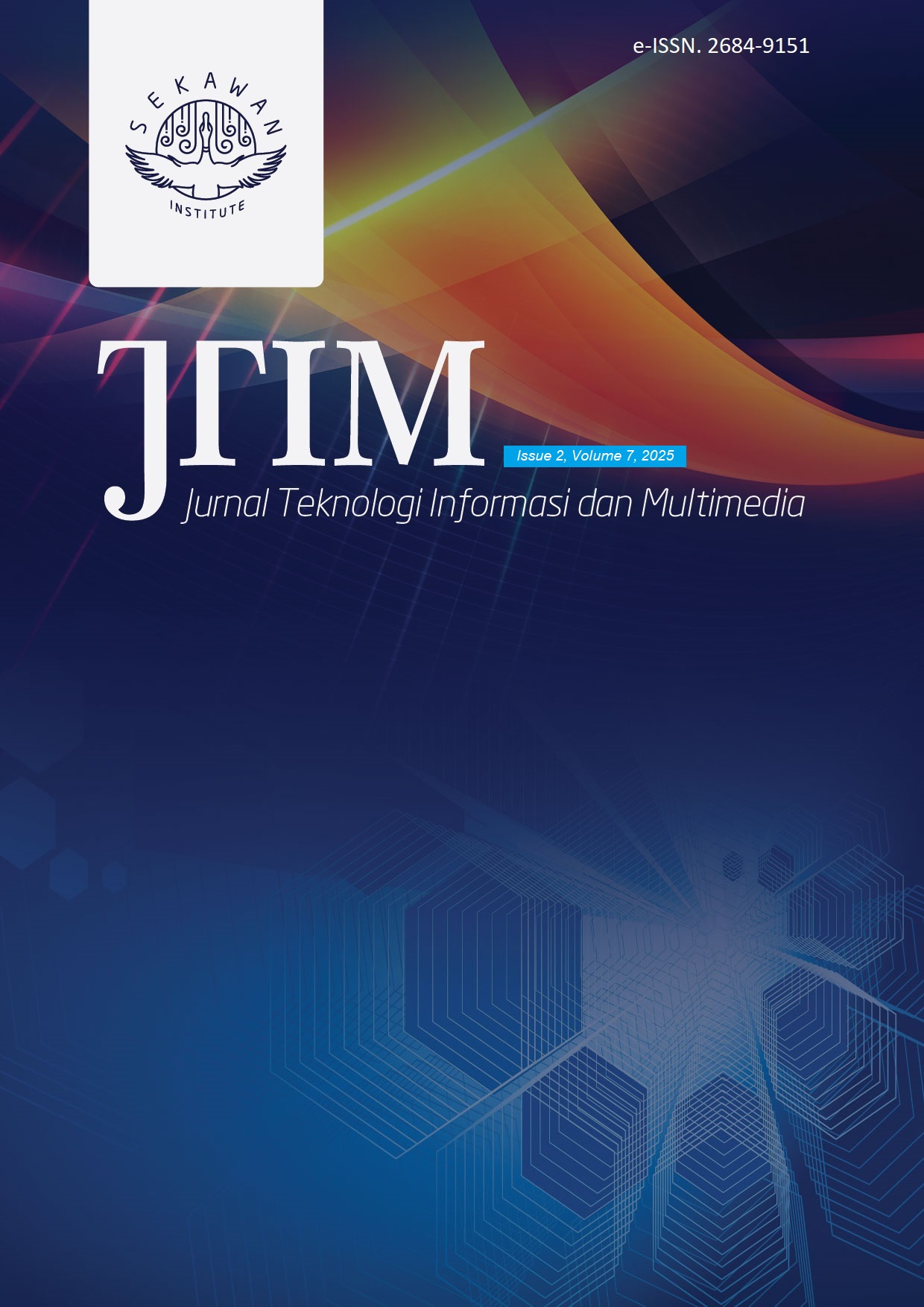Perancangan Prototype Building Management System untuk Air Conditioning Berbasis Iot
DOI:
https://doi.org/10.35746/jtim.v7i2.622Kata Kunci:
Internet of Things, building management system, energy efficiency, infrared sensor, LDRAbstrak
This study aims to design, evaluate, test, and assess a prototype Internet of Things (IoT)-based building management system for air conditioning (AC) control in a campus building. The research background stems from the need for a system that can manage temperature more effectively, aligning with the demands of sustainability in energy management. The methodology employed in this study involves the development of a system using an ESP32 microcontroller, integrated with an Infrared (IR) transmitter and an LDR sensor. Testing was conducted to evaluate the performance of the IR transmitter in detecting signals at various distances (1 to 5 meters) and directions (straight, left, and right), as well as to measure the accuracy of the LDR sensor at a distance of 2 meters. The test results revealed that the IR transmitter achieved optimal detection performance at a distance of 1 meter, with significant degradation at greater distances. Conversely, the LDR sensor demonstrated 100% accuracy at a distance of 2 meters. The study concludes that the IoT-based AC control system designed not only enhances temperature management efficiency but also improves user comfort, with the potential for broader application in building management systems in the future.
Unduhan
Referensi
A. M. Ali, S. A. A. Shukor, N. A. Rahim, Z. M. Razlan, Z. A. Z. Jamal, and K. Kohlhof, “IoT-Based Smart Air Conditioning Control for Thermal Comfort,” in 2019 IEEE International Conference on Automatic Control and Intel-ligent Systems, I2CACIS 2019 - Proceedings, Institute of Electrical and Electronics Engineers Inc., Jun. 2019, pp. 289–294. doi: https://doi.org/10.1109/I2CACIS.2019.8825079.
N. Amani and A. A. R. Soroush, “Effective energy consumption parameters in residential buildings using Building Information Modeling,” Global Journal of Environmental Science and Management, vol. 6, no. 4, pp. 467–480, Sep. 2020, doi: https://doi.org/10.22034/gjesm.2020.04.04.
M. Saleem et al., “Integrating Smart Energy Management System With Internet of Things and Cloud Computing for Efficient Demand Side Management in Smart Grids,” Energies (Basel), 2023, doi: https://doi.org/10.3390/en16124835.
F. Wibowo, “An IoT-Enabled Smart Energy Management System to Improve Energy Efficiency in University Laboratory,” Sinkron, 2024, doi: https://doi.org/10.33395/sinkron.v8i2.13584.
M. Saleem, M. R. Usman, and M. Shakir, “Design, Implementation, and Deployment of an IoT Based Smart Energy Management System,” Ieee Access, 2021, doi: https://doi.org/10.1109/access.2021.3070960.
B. Artono, N. Hidayatullah, and B. Winarno, “Smart Panel System using Internet of Things,” EAI Endorsed Transactions on Internet of Things, vol. 5, no. 17, p. 161747, Jan. 2019, doi: https://doi.org/10.4108/eai.13-7-2018.161747.
K. Irshad, A. Almalawi, A. I. Khan, M. Alam, Md. H. Zahir, and A. Ali, “An IoT-Based Thermoelectric Air Man-agement Framework for Smart Building Applications: A Case Study for Tropical Climate,” Sustainability, 2020, doi: https://doi.org/10.3390/su12041564.
R. Carli, G. Cavone, S. Ben Othman, and M. Dotoli, “IoT Based Architecture for Model Predictive Control of HVAC Systems in Smart Buildings,” Sensors, 2020, doi: https://doi.org/10.3390/s20030781.
A. O. Abdulganiyu, “Development of an Internet of Things Based Air Quality Monitoring System Using Machine Learning,” International Journal of Advanced Natural Sciences and Engineering Researches, 2023, doi: https://doi.org/10.59287/ijanser.1164.
J. H. Jo, B.-W. Jo, J. H. Kim, S. J. Kim, and W. Y. Han, “Development of an IoT-Based Indoor Air Quality Monitoring Platform,” J Sens, 2020, doi: https://doi.org/10.1155/2020/8749764.
E. Cano-Suñén, I. M. Martínez, Á. F. Cuello, B. Zalba, and R. Casas, “Internet of Things (IoT) in Buildings: A Learning Factory,” Sustainability, 2023, doi: https://doi.org/10.3390/su151612219.
J. Yasuoka, G. A. Cordeiro, J. L. Pereira Brittes, R. E. Cooper Ordóñez, S. V. Bajay, and E. H. M. Nunes, “IoT Solution for Energy Management and Efficiency on a Brazilian University Campus – A Case Study,” International Journal of Sustainability in Higher Education, 2022, doi: https://doi.org/10.1108/ijshe-08-2021-0354.
I. G. Wiratmaja, K. R. Dantes, and E. A. Juny Artha, “Peningkatan Laju Pendinginan Ruangan Dengan Media Pendingin Kombinasi Udara Dan Air Disisi Kondensor Pada Mesin Pendingin Tipe Split Air Conditioning,” Jurnal Pendidikan Teknik Mesin Undiksha, 2021, doi: https://doi.org/10.23887/jptm.v9i1.33220.
C.-M. Lin, H. Liu, K. T. Tseng, and S.-F. Lin, “Heating, Ventilation, and Air Conditioning System Optimization Control Strategy Involving Fan Coil Unit Temperature Control,” Applied Sciences, 2019, doi: https://doi.org/10.3390/app9112391.
N. Kampelis et al., “HVAC Optimization Genetic Algorithm for Industrial Near-Zero-Energy Building Demand Response,” Energies (Basel), 2019, doi: https://doi.org/10.3390/en12112177.
Unduhan
Diterbitkan
Terbitan
Bagian
Lisensi
Hak Cipta (c) 2025 Nurnadiyah Syuhada, Arief Taufikurrahman, Arino Bemi Sado

Artikel ini berlisensiCreative Commons Attribution-ShareAlike 4.0 International License.







